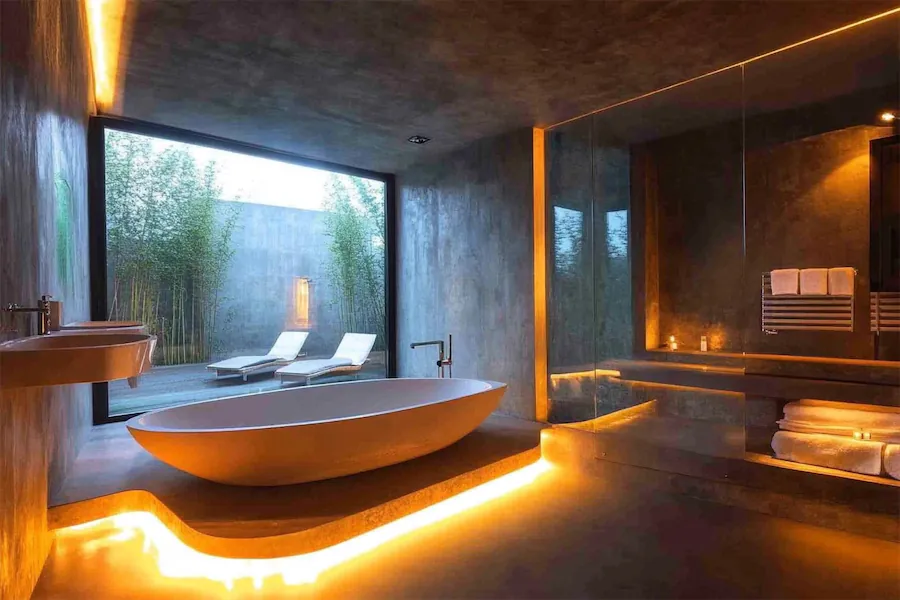An illuminated bathroom seamlessly combines functionality with ambiance, enhancing both the practicality and aesthetic appeal of the space. This article explores the history, key features, applications, considerations, and concludes with insights into illuminated bathrooms.
Introduction to Illuminated Bathrooms
Illuminated bathrooms utilize strategic lighting to enhance visibility and create a desired atmosphere. Incorporating various lighting types—ambient, task, and accent—ensures a well-lit, functional, and inviting space.
History and Origins of Illuminated Bathrooms
The evolution of bathroom lighting has transitioned from simple candlelight to advanced electric fixtures. With technological advancements, modern bathrooms now feature sophisticated lighting designs that prioritize both utility and style.
Key Features of Illuminated Bathrooms
- Layered Lighting: Combining ambient, task, and accent lighting addresses different needs and enhances the overall ambiance.
- Energy Efficiency: Utilizing LED lighting reduces energy consumption and extends the lifespan of fixtures.
- Customization: Dimmable lights and color temperature adjustments allow for personalized lighting schemes to suit various moods and activities.
- Safety: Proper illumination minimizes accidents by ensuring clear visibility, especially in wet areas.
Applications of Illuminated Bathrooms
- Vanity Lighting: Incorporating sconces or backlit mirrors provides focused illumination for grooming tasks.
- Shower and Bathtub Areas: Installing waterproof recessed lighting or LED strips enhances visibility and adds a spa-like ambiance.
- Accent Lighting: Highlighting architectural features or decor elements with accent lights adds depth and interest to the bathroom design.
Considerations When Designing an Illuminated Bathroom
- Light Placement: Strategic positioning of lights prevents shadows and ensures even illumination throughout the space.
- Fixture Selection: Choosing fixtures with appropriate IP ratings ensures safety in moisture-prone areas.
- Color Temperature: Selecting the right color temperature influences the bathroom’s ambiance; cooler tones are ideal for task lighting, while warmer tones create a relaxing environment.
- Natural Light Integration: Maximizing natural light through windows or skylights can reduce reliance on artificial lighting and enhance the bathroom’s atmosphere.
Conclusion
An illuminated bathroom thoughtfully combines various lighting elements to create a space that is both functional and inviting. By considering factors such as light placement, fixture selection, and color temperature, one can design a bathroom that meets practical needs while providing a comfortable and aesthetically pleasing environment.
